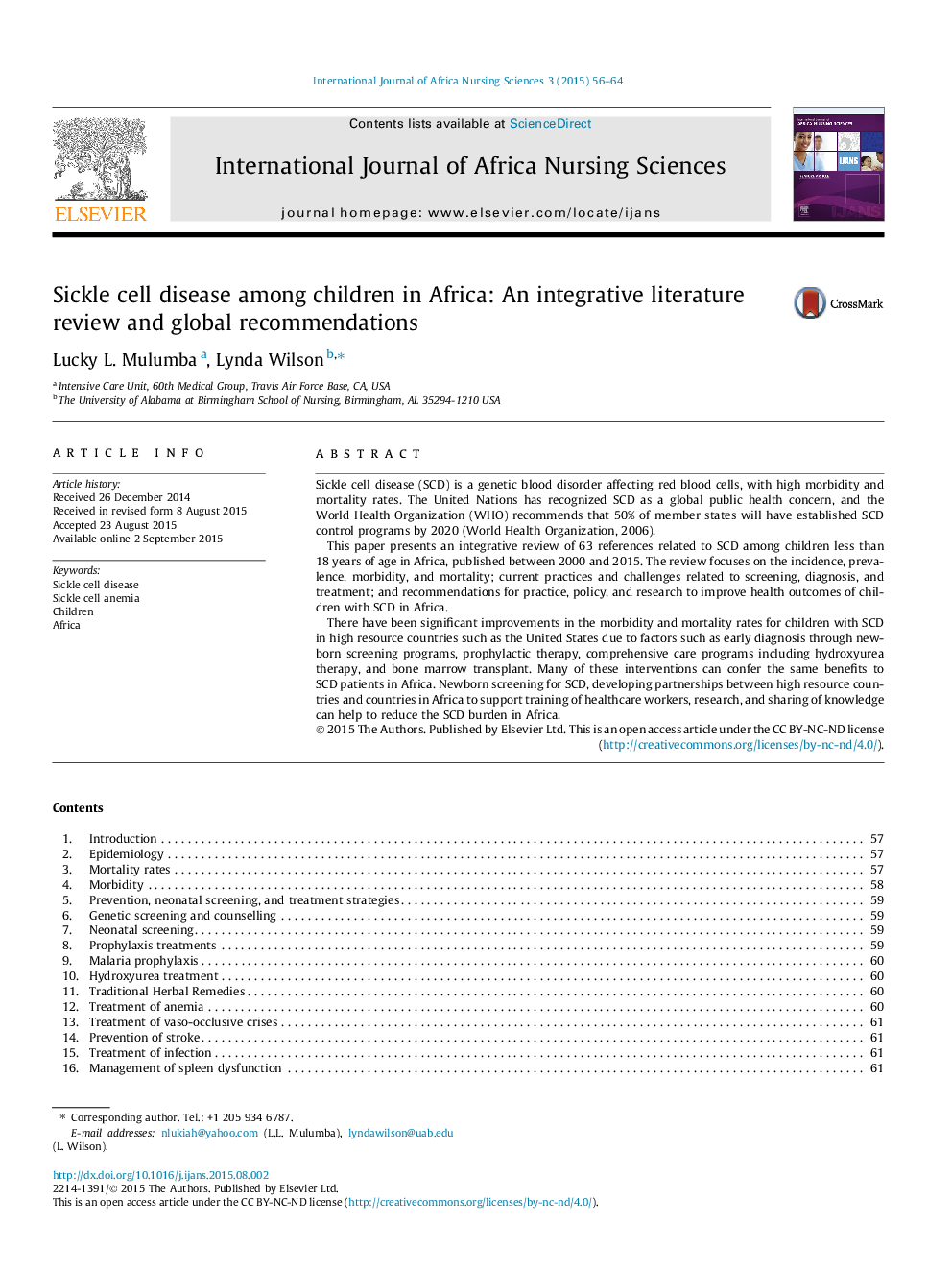| Article ID | Journal | Published Year | Pages | File Type |
|---|---|---|---|---|
| 2685939 | International Journal of Africa Nursing Sciences | 2015 | 9 Pages |
Sickle cell disease (SCD) is a genetic blood disorder affecting red blood cells, with high morbidity and mortality rates. The United Nations has recognized SCD as a global public health concern, and the World Health Organization (WHO) recommends that 50% of member states will have established SCD control programs by 2020 (World Health Organization, 2006).This paper presents an integrative review of 63 references related to SCD among children less than 18 years of age in Africa, published between 2000 and 2015. The review focuses on the incidence, prevalence, morbidity, and mortality; current practices and challenges related to screening, diagnosis, and treatment; and recommendations for practice, policy, and research to improve health outcomes of children with SCD in Africa.There have been significant improvements in the morbidity and mortality rates for children with SCD in high resource countries such as the United States due to factors such as early diagnosis through newborn screening programs, prophylactic therapy, comprehensive care programs including hydroxyurea therapy, and bone marrow transplant. Many of these interventions can confer the same benefits to SCD patients in Africa. Newborn screening for SCD, developing partnerships between high resource countries and countries in Africa to support training of healthcare workers, research, and sharing of knowledge can help to reduce the SCD burden in Africa.
